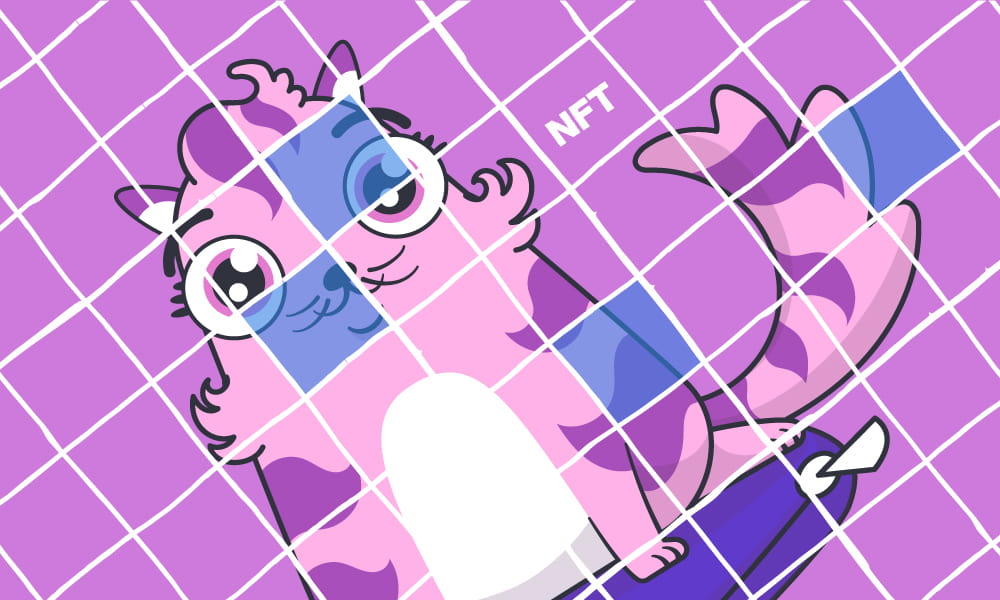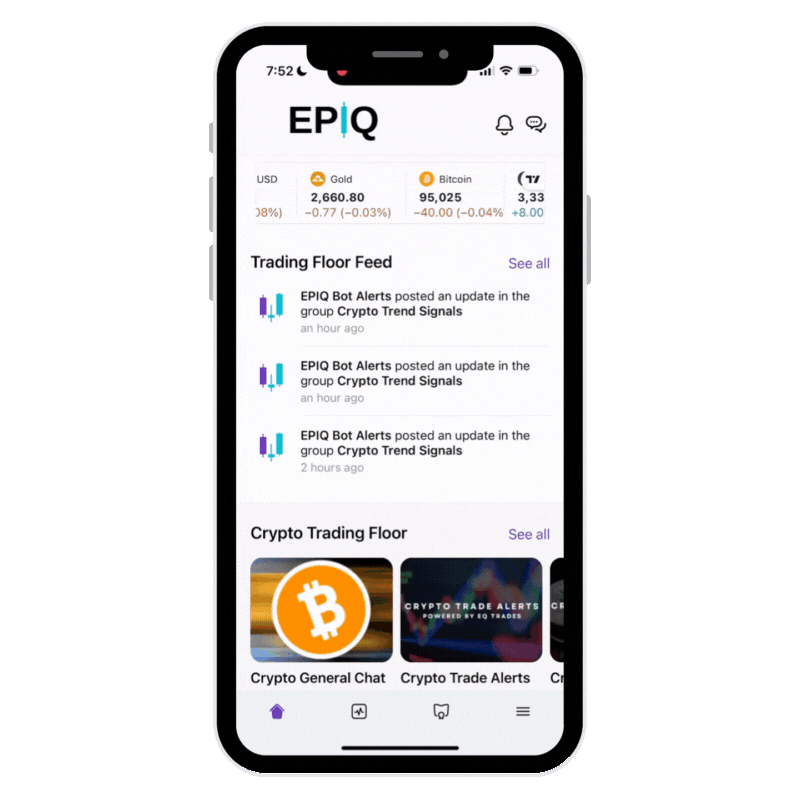The rise of non-fungible tokens (NFTs) has revolutionized digital ownership, allowing people to buy and sell unique digital assets like art, music, and virtual real estate. However, as the NFT market has evolved, high-value collections have become out of reach for many investors. Blue-chip NFTs like Bored Ape Yacht Club, CryptoPunks, and Fidenza have sold for hundreds of thousands to millions of dollars, making them inaccessible to the average buyer. This is where fractional NFTs (F-NFTs) come in.
Fractional NFTs break down expensive digital assets into smaller, more affordable shares, allowing multiple investors to own a piece of a high-value NFT. This innovation has the potential to increase liquidity, democratize access, and unlock new investment opportunities in the NFT space.
At EPIQ Trading Floor, we help traders stay ahead of emerging NFT trends like fractional ownership. Our exclusive mobile app offers trade signals, private livestreams, and one-on-one coaching to refine your crypto investment strategies. Use code “BLOG” at checkout for 10% off membership, and start your risk-free 3-day trial today—cancel anytime within 72 hours!
What Are Fractional NFTs?
A fractional NFT is an NFT that has been divided into multiple ownership shares, allowing several investors to own portions of the same digital asset. This process is achieved through smart contracts, which lock an NFT in a vault and issue fungible ERC-20 tokens representing fractional ownership of the original asset. These shares can then be traded, bought, or sold on secondary marketplaces, much like traditional stocks.
For example, if an NFT valued at $1 million is fractionalized into 1,000 shares, each share would be priced at $1,000, making the asset more accessible to a wider range of investors.
Platforms like Fractional.art, Nifty Gateway, and Unicly are leading the way in enabling fractionalized NFT ownership, allowing collectors and investors to buy into exclusive projects without paying the full cost of ownership.

How Fractional NFTs Are Changing the Market
Fractionalized NFTs introduce several game-changing benefits that are reshaping the NFT investment landscape.
One of the key advantages is increased liquidity. Unlike traditional NFTs, which often require a single buyer to purchase an entire asset, fractional NFTs allow investors to trade smaller shares on secondary markets, making it easier to buy and sell NFT assets.
Another major benefit is greater accessibility. High-value NFTs, previously available only to wealthy collectors and institutional investors, are now within reach for everyday investors. This democratization of digital ownership is driving more participation in the NFT market, making it more inclusive and diverse.
Fractionalized NFTs also provide better price discovery. By allowing multiple investors to bid on and purchase shares of an NFT, the market can more accurately determine an asset’s value, reducing volatility and speculation.
Moreover, fractional NFTs create new investment strategies. Traders can diversify their NFT portfolios by holding shares of multiple high-value assets instead of investing all their capital in a single piece. This approach mitigates risk while maximizing exposure to different NFT projects and digital collectibles.
Use Cases of Fractional NFTs
Fractionalization is being applied across various industries, expanding the utility of NFTs beyond just digital art.
In the fine art world, major auction houses and digital art platforms are tokenizing high-value artworks, allowing investors to own shares of famous pieces without having to buy them outright. This opens up art investing to a broader audience, increasing liquidity in the market.
In real estate, fractional NFTs are revolutionizing property ownership by allowing multiple investors to buy portions of real-world assets. Platforms like Propy and Lofty AI enable users to co-own real estate properties via blockchain, earning passive income from rental profits.
The gaming industry is also adopting fractional NFTs, where in-game assets and virtual land are being tokenized and divided into shares. This allows gamers and investors to own portions of high-value digital assets, creating new opportunities for play-to-earn economies.
Even music royalties are being tokenized through fractional NFTs. Artists can sell shares of their music rights, allowing fans and investors to earn a portion of future revenue from streaming and licensing fees. This model provides a new way for musicians to monetize their work, while allowing supporters to invest directly in their success.
Risks and Challenges of Fractional NFTs
Despite their potential, fractional NFTs also introduce challenges and risks that investors need to consider.
One of the main concerns is regulatory uncertainty. Because fractional NFTs resemble securities in some jurisdictions, they could face legal scrutiny from financial regulators, leading to potential compliance challenges. The U.S. Securities and Exchange Commission (SEC) has already started investigating whether certain NFT projects qualify as securities, which could impact the fractional NFT market.
Another issue is governance and decision-making. Since multiple people own shares of the same NFT, there must be a mechanism for deciding how the asset is managed, sold, or used. Some fractional NFT platforms allow token holders to vote on governance decisions, while others rely on centralized management, which may not always align with investor interests.
There’s also the risk of market manipulation and price volatility. Since fractional NFTs are still a relatively new market, speculative trading and hype can lead to artificial price inflation. Investors should exercise caution and conduct thorough research before buying fractional NFT shares.

Are Fractional NFTs the Future of Digital Ownership?
Fractional NFTs have the potential to revolutionize asset ownership, making expensive digital assets more accessible and increasing market liquidity. By breaking down high-value NFTs into smaller, tradable shares, they create new investment opportunities across multiple industries, from fine art and real estate to gaming and music.
However, as the market matures, fractional NFTs will need stronger regulatory frameworks, transparent governance structures, and better risk management strategies to gain mainstream adoption. If these challenges can be addressed, fractionalized NFTs could become a dominant force in the digital economy, changing the way people invest in and own high-value assets.
At EPIQ Trading Floor, we help investors stay ahead of game-changing innovations like fractional NFTs. Our exclusive mobile app provides expert trade signals, member-only livestreams, and one-on-one coaching to help you navigate the evolving NFT landscape. Use code “BLOG” at checkout for 10% off your membership, and start your risk-free 3-day trial today. Cancel anytime within 72 hours if you’re not satisfied!
Disclaimer:
This content is for educational purposes only and does not constitute financial advice. Cryptocurrency trading and investing involve risks, and investors should conduct their own research before making financial decisions.










Responses